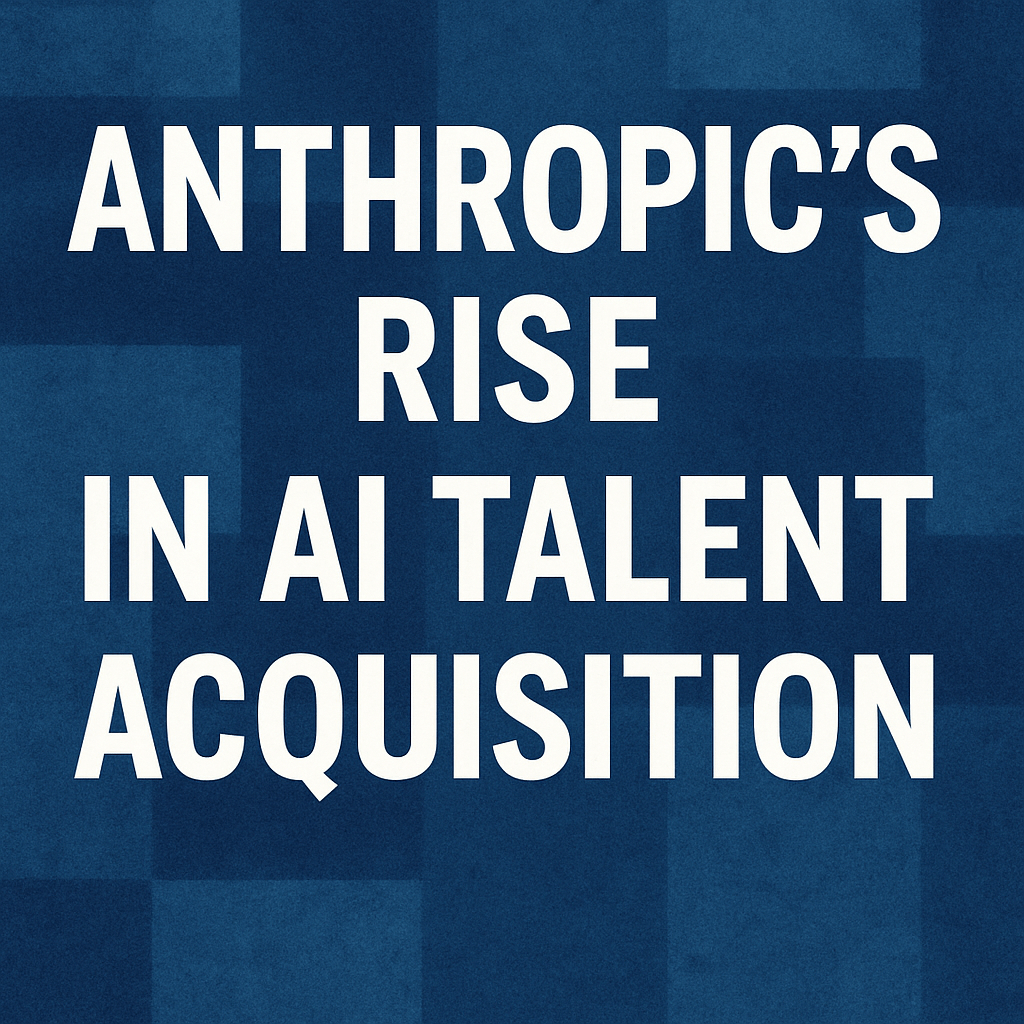Anthropic’s Rise in AI Talent Acquisition

In an increasingly competitive landscape, Anthropic has positioned itself as a formidable player in the AI talent war, significantly attracting engineers from industry giants OpenAI and DeepMind. According to the recently published 2025 State of Talent Report by the Venture Capital firm SignalFire, the metrics indicate a troubling trend for OpenAI and DeepMind, with engineers choosing to join Anthropic at a staggering ratio.
Talent Migration Metrics
The report reveals that engineers at OpenAI are now 8 times more likely to defect to Anthropic compared to engineers moving in the opposite direction, whereas DeepMind’s figures are even less favorable, measuring 11 times. This migration underscores a significant shift in the AI workforce landscape that could have profound implications for the future of AI research and development.
Retention Rates and Employee Satisfaction
Furthermore, Anthropic has emerged as a leader in talent retention, boasting an impressive 80% retention rate for employees hired within the last two years. This figure surpasses those of its competitors, with DeepMind trailing at 78% and OpenAI at a mere 67%. Such retention rates align more closely with larger tech giants like Meta, which sits at 64%.
Company Culture and Work Environment
One key factor contributing to Anthropic’s growing popularity among engineers is its distinct workplace culture. Founded in 2021 by a cadre of former OpenAI employees, Anthropic promotes an environment that fosters autonomy and intellectual discourse. This counterapproach to traditional tech corporate culture is designed to attract talent that may be disillusioned by the pressures of larger firms.
- Flexible work arrangements
- Defined career progression pathways
- Support for intellectual debate among peers
In addition to these attributes, employees have cited a clear commitment to AI safety—a necessary focus, especially considering the rapid advancements in AI technologies. This commitment is evident in the development of their flagship models, including Claude, which competes effectively against models from OpenAI and Google on critical software engineering benchmarks. Needs for responsible AI deployment resonate with professionals in the industry, particularly following controversial developments in AI capabilities.
Performance of AI Models
Notably, Anthropic’s latest model, branded Opus 4, is being touted as “the world’s best coding model.” This claim is backed by competitive analyses that demonstrate its superior performance in various coding tasks and algorithm development when compared to its peers. This success positions Anthropic as an innovator in AI technology, further solidifying its appeal to top-tier talent.
The Competitive Landscape: Strategies for Retention
The contrasts in engineering talent retention underscore the lengths to which companies are going to safeguard their intellectual assets. Companies like Google DeepMind are implementing strict 6 to 12-month non-compete clauses that prevent researchers from joining rival firms while still receiving full salaries. Such measures emphasize the high stakes involved in retaining AI talent and demonstrate the increasing level of competition in the field.
Additionally, OpenAI has been known to offer substantial financial incentives to prevent employees from leaving. High-ranking engineers can command annual salaries exceeding $10 million, supplemented by retention bonuses that can exceed $2 million plus equity increases of over $20 million as per reports from Reuters. The exit of former CTO Mira Murati has compounded these challenges, leading to concerns about the cohesion and stability of the workforce at OpenAI.
Looking Forward: What Does This Mean for the AI Sector?
The ramifications of this talent war extend beyond individual companies. The acceleration of AI research and development as a result of strategic hiring could signal a shift in the leading figures within the industry. With Anthropic leading the charge in attracting top talent while emphasizing a more responsible approach to AI development, it poses critical questions about sustainability and ethics that the AI sector must address moving forward.
“The battle for top AI talent will likely continue to intensify as demand far outstrips supply, with each company vying for not just technological advancement but also responsibility in deployment.”
This landscape indicates a future where competition is not merely about technology but the approach towards it, with talent being drawn to missions they believe in.
Conclusion
In conclusion, the ongoing talent war in the AI sector showcases the dynamic forces at play as companies vie for supremacy. Anthropic’s rise highlights how innovative approaches to culture and employee satisfaction can lead to increased retention and attraction of top talent, thereby shaping the future of AI development.